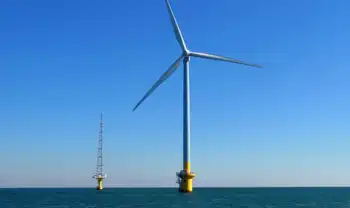Mothballed Pickering reactor finally restarted
- An idled reactor at Pickering's nuclear complex is now running at 70 per cent capacity and will produce full power by the end of September, Ontario Power Generation Inc. says.
Unit four was already producing power, generating about 360 megawatts for the province's electricity grid, OPG spokesperson John Earl said.
"We are now just in the last stage of commissioning, or testing, bringing the unit back up to full power where it is providing reliable electricity to the Ontario grid," Earl said.
"It's over 70 per cent today on its way back to full power. We will declare the unit in-service in September."
At full power, each of Pickering A units delivers 515 megawatts, enough to supply 2 per cent of the province's electricity on a day of very high demand. The four reactors were taken out of service in 1997.
The restart is almost two years behind schedule and over-budget. OPG had planned to restart four idled reactors at Pickering by the end of 2000 at a total cost of $1.3 billion. Bringing the first online has cost more than $1.2 billion.
"I'm very uneasy about this return to service," said Tom Adams, executive director of Energy Probe, a nuclear industry watchdog group.
"The track record has not been good. We should not expect this reactor to operate without glitches."
The timing and cost of bringing the three shutdown reactors back into service has not been determined.
"We will take the lessons from that experience and apply that to preparing a schedule and costing for the next three units," Earl said.
Meanwhile, an industry group representing companies such as General Motors Corp. and Falconbridge Ltd. says Ontario faces more blackouts unless the government sells more power plants and lets the market set prices.
Energy Minister John Baird has delayed plans for OPG, the government-owned utility, to reduce its output of the province's power to about 35 per cent from 70 per cent by November, 2005. The government also backtracked on plans to let the market determine prices.
"We have received input over and over that having 70 per cent of Ontario's power generation and all of its price-setting plants in the hands of one company was a key deterrent to new generation and investment," David McFadden, chairman of the Stakeholders' Alliance for Electricity and Customer Choice, said in Markham recently.
Baird capped prices for homeowners and small businesses at $43 a megawatt hour. It costs between $60 and $70 to produce a megawatt hour of electricity at a new gas-fired plant, and about $90 by wind turbine.
McFadden said the current cap should be raised over the next three years to more closely reflect the cost of producing electricity.
Related News

N.L. premier says Muskrat Falls costs are too great for optimism about benefits
ST JOHNS - Newfoundland and Labrador's premier says the Muskrat Falls hydro megaproject is currently too much of a massive financial burden for him to be optimistic about its long-term potential.
"I am probably one of the most optimistic people in this room," Liberal Premier Dwight Ball told the inquiry into the project's runaway cost and scheduling issues.
"I believe the future is optimistic for Newfoundland Labrador, of course I do. But I'm not going to sit here today and say we have an optimistic future because of the Muskrat Falls project."
Ball, who was re-elected on May 16, has been critical of…




